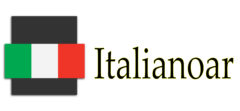Regional Transfer Offices (RTOs) are built-in to maintaining order and effectiveness in the kingdom of path transport. But, the full potential of RTO resources usually stays untapped. In this informative article, we explore the significance of RTO resources and delve into how their optimization may result in increased procedures, improved companies, and a far more streamlined street transfer ecosystem.
Modernizing Infrastructure and Methods:
To discover the potential of RTO resources, it is crucial to purchase modern infrastructure and systems. By adopting advanced technologies, RTOs can automate functions, reduce paperwork, and minimize administrative burdens. Implementation of user-friendly on the web programs for solutions such as for instance vehicle subscription, license renewals, and cost payments can considerably increase convenience for both RTO personnel and street users.

Empowering RTO Personnel:
RTO methods encompass not merely scientific developments but additionally the abilities and understanding of the workers working within these offices. By giving extensive teaching applications, workshops, and professional growth opportunities, RTOs may enable their staff members to provide extraordinary services. Well-trained workers can handle complex queries, provide exact advice, and guarantee successful managing of certification, fostering a culture of superiority within RTOs.
Leveraging Knowledge for Ideas and Improvements:
RTOs acquire large amounts of data linked to cars, permits, road incidents, and more. By harnessing the power of data analytics, RTOs may obtain valuable insights in to traffic habits, license compliance rates, and vehicle performance. These insights may RTO training resources evidence-based decision-making, leading to the implementation of targeted path protection steps, enhanced reference allocation, and improved overall performance of road transfer systems.
Enhancing Client Knowledge:
RTO sources should be dedicated to giving excellent client activities to street users. Employing user-centric approaches, such as for example online session techniques, faster waiting times, and obvious communication channels, can significantly enhance customer satisfaction. Also, positive transmission regarding any improvements in regulations, paperwork requirements, or company techniques can help users understand the RTO functions easily and efficiently.
Strengthening Interagency Effort:
To realize the entire possible of RTO assets, venture with different agencies and stakeholders is vital. Easy integration with police agencies, traffic management authorities, and car inspection stores can lead to improved control, improved enforcement of rules, and successful sharing of information. That relationship can result in greater street safety steps, paid down traffic obstruction, and a more holistic approach to handling the transport ecosystem.
Conclusion:
Optimizing RTO methods is important in operating excellence and performance within the street transport sector. By modernizing infrastructure, empowering personnel, leveraging information ideas, increasing client knowledge, and fostering interagency cooperation, RTOs may discover their whole potential. This may not merely result in streamlined procedures and increased companies but additionally contribute to safer streets, increased individual satisfaction, and an even more sustainable and efficient path transfer environment for all.
